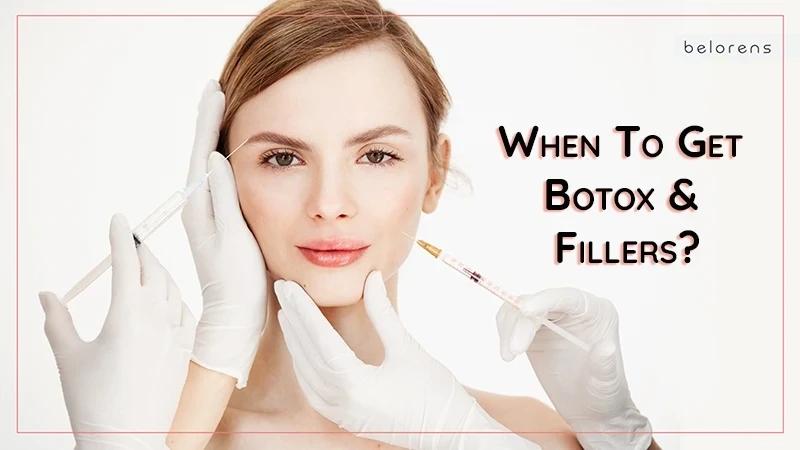Injectable Toxins: Compare Botox, Dysport, and Xeomin
- ByMedical Content Team
- Medically Reviewed byDr. Sabine Kulhanek
Fact checked
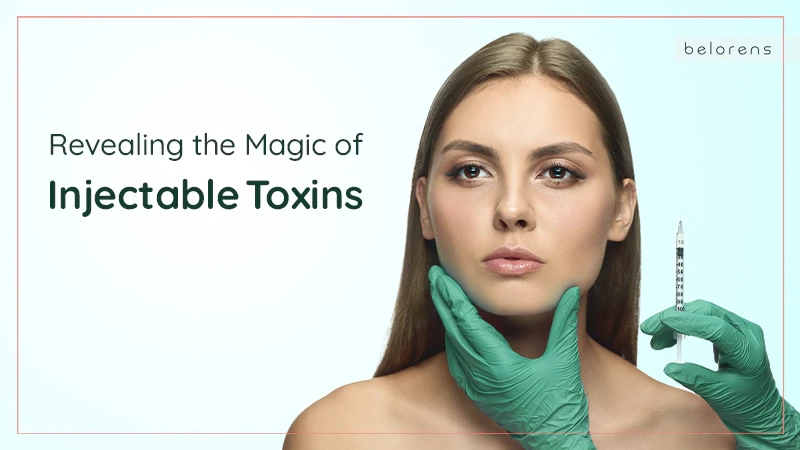
Table of contents
- The Rise of Injectable Toxins as Told by Statistics
- What Are Injectable Toxins?
- Which Areas Are Treated with Injectable Toxins?
- Beyond Aesthetics: Medical Uses of Injectable Toxins
- The Injection Process: How are Injectable Toxins Used?
- Botox vs. Dysport vs. Xeomin: Which Injectable Toxin to Go For?
- Final Verdict: Which One of Botox, Dysport, or Xeomin is for You?
- Conclusion
- FAQ
In the quest for enduring beauty and the pursuit of a more youthful appearance, modern science has revealed a range of potent tools. Among the most sought-after and effective options are injectable toxins, all vying for the coveted title of "Fountain of Youth." Here, we set out to reveal the magic of Botox, Dysport, and Xeomin injectable toxins, three key players in modern cosmetic enhancement.
These powerful injectables, celebrated for their transformative abilities, have revolutionized the field of aesthetics, enabling individuals to rediscover their youthful glow through strategic injections. Botox, Dysport, and Xeomin are names well-known to those seeking timeless beauty, but what sets them apart? What distinct characteristics do they possess, and how do they compare in their quest to reverse the signs of ageing?
Today, we delve into the science, the art, and the subtle variances between these injectable toxins, unveiling the secrets behind their age-defying prowess. Join us as we analyze their active ingredients, mechanisms of action, and many factors impacting their effectiveness. Whether you're contemplating one of these treatments or simply curious about the science of ageless beauty, this thorough exploration will leave you informed and inspired. Welcome to the realm of Injectable Toxins: Revealing the Enchantment of Botox, Dysport, and Xeomin, and the captivating journey of comparing them.
The Rise of Injectable Toxins as Told by Statistics
In the realm of contemporary aesthetics, a revolutionary metamorphosis has occurred through the introduction of injectable toxins. These potent beauty treatments, which encompass Botox, Dysport, and Xeomin, have reshaped our approach to tackling the signs of ageing. This has led to a profound transformation within the beauty and wellness industry. With data reflecting the escalating demand for these non-surgical solutions, the ascent of injectable toxins is undeniably impressive. Here’s a look at the stats that reflect the meteoric rise of the injectable toxin industry.
Remarkable Expansion
Over the past two decades, the utilization of injectable toxins has experienced remarkable growth.

According to statistics from the American Society of Plastic Surgeons, the number of botulinum toxin type A procedures in the United States alone surged by a remarkable 845% between 2000 and 2020.
A Global Sensation
The appeal of injectable toxins reaches far beyond U.S. borders. The International Society of Aesthetic Plastic Surgery (ISAPS) reported that botulinum toxin injections were the most performed non-surgical procedure worldwide in 2019.
Aspirations of Youth
It's not only older individuals seeking injectable toxin treatments. The American Society for Dermatologic Surgery (ASDS) observed a substantial uptick in the number of younger patients in their 20s and 30s choosing preventative Botox and other toxin injections to preserve youthful skin.
Men Embrace the Trend, Too!
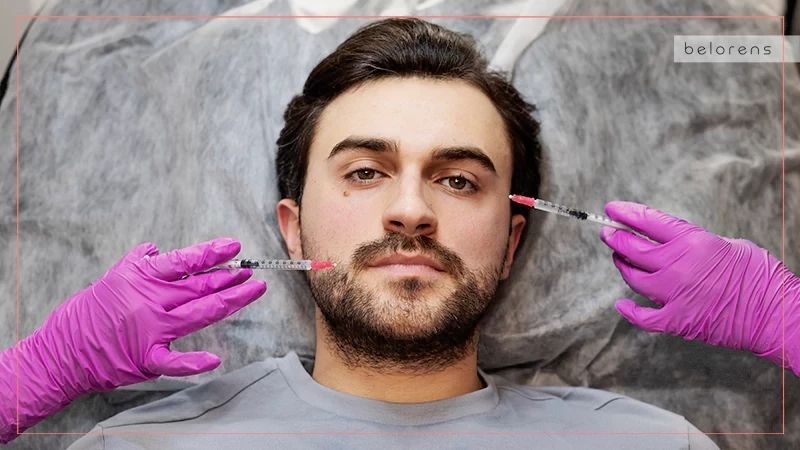
Injectable toxins don't discriminate by gender. Statistics from the American Society for Aesthetic Plastic Surgery (ASAPS) uncovered a significant rise in the number of men opting for Botox and Dysport treatments, indicating a growing acceptance of these procedures among males.
Erasing Wrinkles
A key driving force behind this surge is the desire to reduce facial wrinkles. The American Academy of Facial Plastic and Reconstructive Surgery (AAFPRS) found that botulinum toxin injections ranked among the top five most requested non-surgical procedures in 2020.
Global Market Value
The global market for injectable toxins has witnessed remarkable expansion. As per data from Grand View Research, the global botulinum toxin market was valued at $4.4 billion in 2020 and is expected to reach $7.3 billion by 2027.
These statistics eloquently articulate the evolving landscape of aesthetics and the growing fascination with injectable toxins. As these figures continue to climb, it is clear that the allure of smoother, more youthful skin has transcended gender and age boundaries. Injectable toxins have unequivocally established themselves as an indispensable tool in pursuing timeless beauty, prompting us to delve deeper into their mechanisms, efficacy, and intricacies.
What Are Injectable Toxins?
Injectable toxins, or neuromodulators, represent a class of medical and cosmetic treatments employing purified proteins isolated from the bacterium Clostridium botulinum. These agents are administered via injections into specific muscles to temporarily obstruct nerve signals, resulting in muscle relaxation. In the realm of aesthetic medicine, they are widely employed to reduce the appearance of wrinkles and fine lines, thereby bestowing a more youthful and smoother complexion.
Botox: The Pioneer of Wrinkle-Reducing Injections
Botox, also known as onabotulinumtoxinA, is a prominent injectable toxin. It operates by obstructing nerve signals in muscles, temporarily curtailing their activity. Botox finds applications in both cosmetic and medical domains, addressing various conditions, including wrinkle mitigation, muscle spasms, and excessive perspiration.
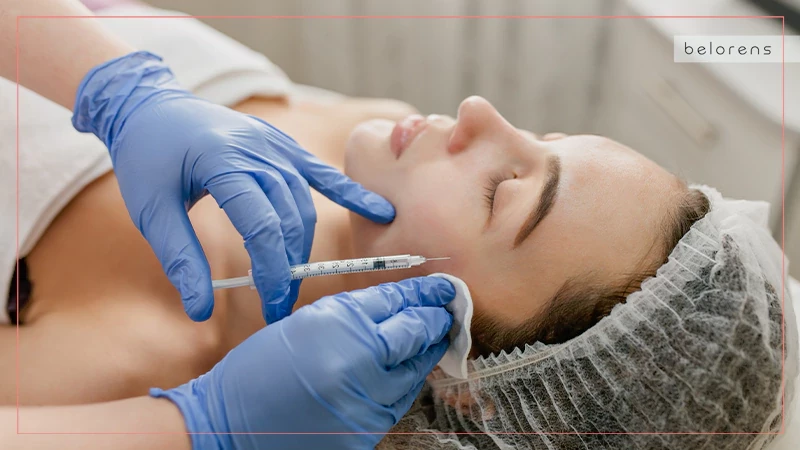
Dysport: A Contender in the Anti-Wrinkle Arsenal
Dysport is an alternate brand of injectable toxin featuring abobotulinumtoxinA. It functions similarly to Botox, inducing muscle relaxation by impeding nerve signals. Primarily, Dysport is employed for cosmetic purposes, effectively reducing facial wrinkles and lines.
Xeomin: A Unique Perspective on Wrinkle Smoothing
Xeomin, also recognized as incobotulinumtoxinA, is yet another injectable toxin brand. Like Botox and Dysport, it inhibits nerve signals to muscles, resulting in muscle relaxation. Xeomin serves cosmetic purposes, particularly in the realm of reducing facial wrinkles and expression lines.
Which Areas Are Treated with Injectable Toxins?
There are many different parts of the human body that can receive the aesthetic and medical benefits of injectable toxins. With muscles and nerves being the primary targets of these toxins, it is important to know exactly when you can choose to go for injectable toxin procedures. Here are the ten most commonly targeted body areas, with their expression lines and specific application maps detailed.
Facial Wrinkles
Facial wrinkle removal is the most popular medical service related to injectable toxins. Facial wrinkles are the most commonly targeted by injectable toxins. Here are the expression lines that benefit the most from them:
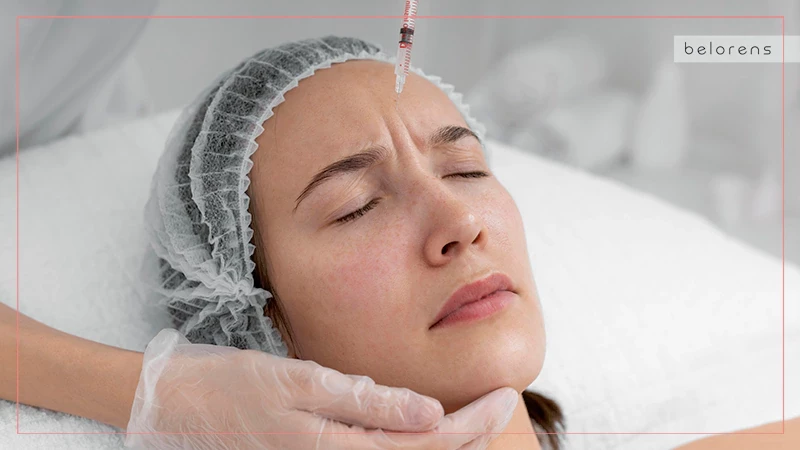
- Horizontal lines on the forehead
- Vertical lines between the eyebrows, often known as "frown lines"
- Wrinkles at the corners of the eyes, commonly called "crow's feet"
- Lines that extend from the mouth's corners to the chin, known as marionette lines
- Lines that appear while smiling also referred to as nasolabial folds
Eyebrow Elevation
Injectable toxins can be employed to subtly raise and reshape the eyebrows, offering a more youthful and alert look.
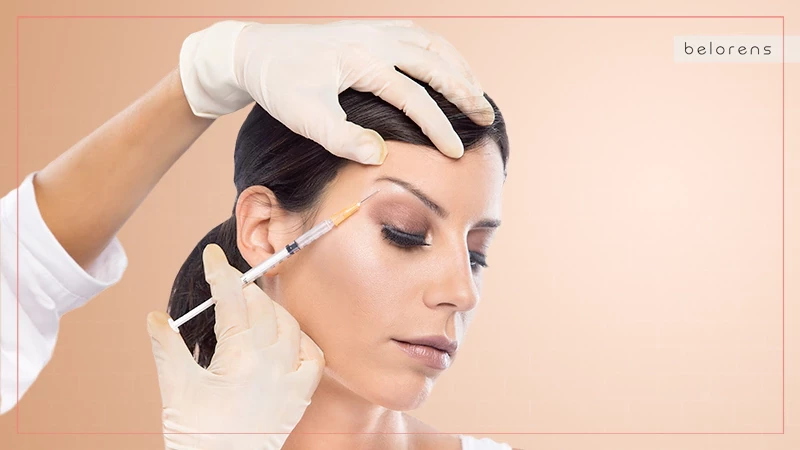
Lip Enhancement
Injectable toxins can be utilized to relax and soften the appearance of fine lines and wrinkles around the lips, often termed "lipstick lines" or "smoker's lines."
Jaw Contouring
Neuromodulators can reduce the appearance of a wide or square jawline by relaxing the jaw muscles.
Chin Softening
For those with a prominently pronounced chin, injectable toxins can be utilized to diminish the appearance of chin dimples or a "cobblestone" chin.
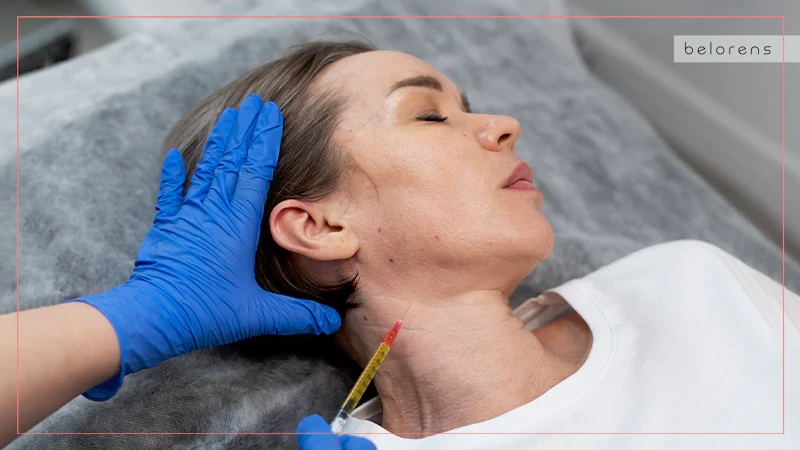
Neck Bands
Injectable toxins are effective in relaxing neck muscles, lessening the visibility of vertical neck bands, known as platysmal bands.
Excessive Sweating (Hyperhidrosis)
Neuromodulators are useful in managing excessive sweating, especially in areas like the underarms, palms, and feet.
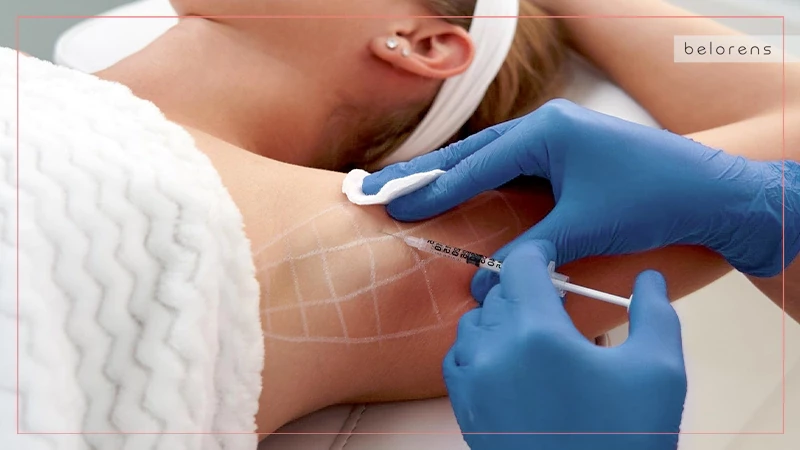
Migraine and Headache Management
Injectable toxins are applied to prevent chronic migraines and tension-type headaches, relieving individuals experiencing frequent headaches. This is a purely medical use case and is often forgotten about.
Muscle Spasms and Pain Management
Injectable toxins can help manage various muscle-related conditions, such as spasticity, cervical dystonia, and myofascial pain syndrome.
Gummy Smile
In the case of individuals with a "gummy smile" (excessive gum exposure when smiling), injectable toxins can be used to relax the muscles responsible for lifting the upper lip to restore beauty to the smile of the patient.

Beyond Aesthetics: Medical Uses of Injectable Toxins
We already briefly alluded to the non-aesthetic use cases of injectable toxins. But the actual medical use cases go far beyond what the common perception is. So here, we will go over the medical, non-aesthetic use cases of injectable toxins like Botox, Dysport, and Xeomin. It's important to note that the use of injectable toxins for medical purposes should be carried out by qualified healthcare professionals who are experienced in administering these treatments. Always be careful to delegate the medical administration of injectable toxins to the respective medical expert.
Dystonia
Injectable toxins can be used to treat muscle spasms and dystonia, which are involuntary muscle contractions that can be painful and debilitating. They are commonly used for conditions like cervical dystonia (involuntary neck muscle contractions), blepharospasm (eyelid muscle spasms), and hemifacial spasms.
Muscle Stiffness in Multiple Sclerosis
Some patients with multiple sclerosis experience muscle stiffness and spasticity. Injectable toxins can be used to reduce muscle stiffness, making it easier for these individuals to move and manage their symptoms.
Urinary Incontinence
Injectable toxins can help with overactive bladder and urinary incontinence by relaxing the bladder muscles. They are often used when other treatments haven't been effective.
Temporomandibular Joint (TMJ) Disorders
For individuals with TMJ disorders that cause jaw muscle pain and dysfunction, injectable toxins can be used to reduce muscle tension and alleviate pain.
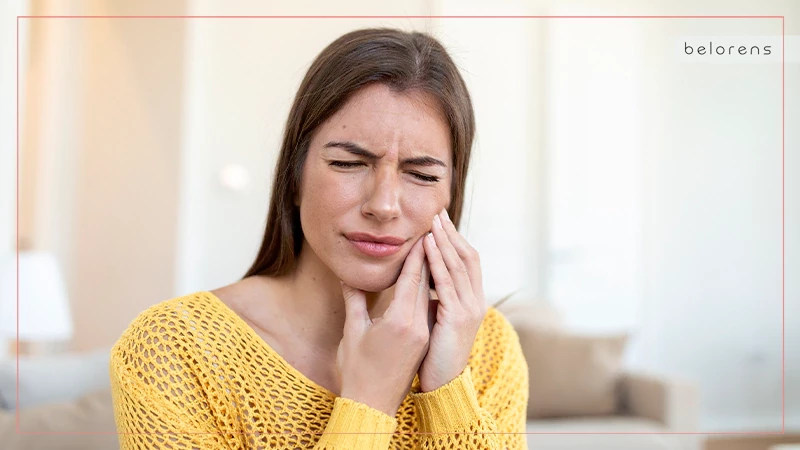
Bruxism (Teeth Grinding)
Injectables can help treat bruxism by relaxing the jaw muscles responsible for teeth grinding, which can reduce the associated pain and tooth damage.
Eye Disorders
Injectable toxins are used for certain eye conditions like strabismus (crossed eyes) and lazy eye (amblyopia) to help realign the eyes and improve vision.
Pain Management
In some cases, injectable toxins are used for pain management, particularly in cases of chronic pain associated with muscle spasms or tension.
Tremors
For conditions like essential tremors or Parkinson's disease, injectable toxins may be used to help manage tremors and improve motor control.
The Injection Process: How are Injectable Toxins Used?
The injection process for these toxins is a well-established and minimally invasive approach to addressing various cosmetic and medical concerns, providing individuals with renewed confidence and a sense of well-being. These treatments encompass the precise injection of refined proteins into specific areas of the body to attain the desired results. Here is an overview of how injectable toxins are applied.
Also Read: When to Get Botox Injections and Dermal Fillers?
Step 1: Initial Consultation and Evaluation
The process typically starts with an initial consultation with a qualified healthcare provider, often a dermatologist or plastic surgeon. During this consultation, the individual's concerns and objectives are discussed, and a comprehensive assessment of the targeted areas is performed.
Step 2: Tailored Treatment Planning
Based on the evaluation, the healthcare provider customizes the treatment plan, determining the type and quantity of injectable toxin required for optimal results.

This personalized approach ensures that the treatment aligns with the individual's unique needs.
Step 3: Preparation
Before the injection, the skin is cleansed, and a topical anaesthetic may be applied to minimize discomfort. The selected toxin is prepared for injection by dilution with a saline solution.
Step 4: Injection Procedure
A fine needle is used by the healthcare provider to inject the toxin directly into the targeted
muscles or tissues. The procedure is precise, with injections strategically placed to achieve the desired effect. The injection itself is relatively quick, often lasting just a few minutes.
Step 5: Post-Injection Assessment
After the injection, the healthcare provider may evaluate the individual's response to ensure that the treatment was administered effectively. Any necessary touch-ups or adjustments can be made at this stage.
Step 6: Recovery and Aftercare
Following the injection, there may be mild swelling, redness, or bruising at the injection sites.
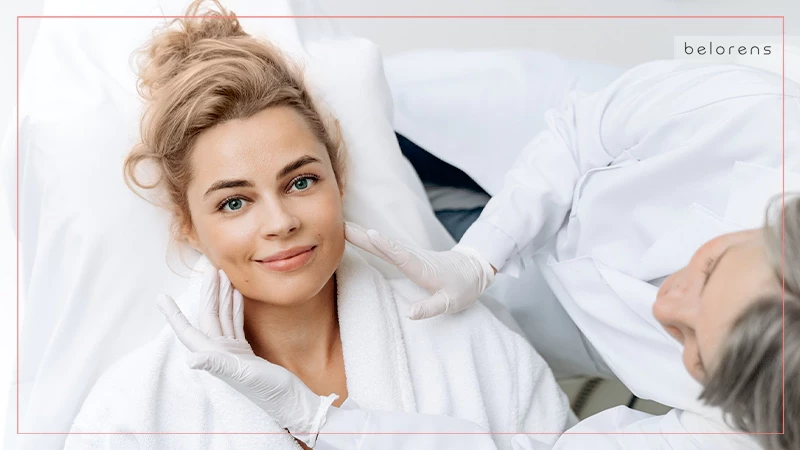
Patients are advised to adhere to post-treatment care instructions, including avoiding strenuous exercise, refraining from massaging the treated areas, and staying upright for a few hours after the procedure.
Step 7: Outcomes and Follow-Up
The effects of injectable toxins usually become apparent within a few days to a few weeks. Results can last for several months, after which the treatment may need to be repeated for maintenance. Patients are encouraged to schedule follow-up appointments to track progress and receive subsequent injections as needed.
Botox vs. Dysport vs. Xeomin: Which Injectable Toxin to Go For?
Botox, Dysport, and Xeomin are the three most popular and prominent injectable toxins. But having three choices to go for can often be rather confusing for the average person. So here, we will dive deep into a detailed comparison between these three injectables across eight different categories. By the time this comparison is over, you will have a clear understanding of how exactly they differ from one another, and you will be able to make a more informed choice regarding which one of them you want to use.
Ingredients and Formulation
This category is about the composition and structure of the injectable toxin, including the active neurotoxin and any accompanying proteins or formulations.
- Botox
Botox's primary ingredient is onabotulinumtoxinA, a neurotoxin derived from the bacterium Clostridium botulinum. It comes in a complex form, including accessory proteins that encapsulate the active toxin. These proteins play a role in stabilizing the formulation and protecting it during production and transportation.
- Dysport
Dysport, similar to Botox, is composed of a neurotoxin, abobotulinumtoxinA, also originating from Clostridium botulinum. However, it contains fewer accessory proteins, making it a comparatively purer form of the toxin. This reduced protein load might contribute to a slightly faster onset of action in some cases.
- Xeomin
Xeomin is known for its minimalistic approach. It consists of incobotulinumtoxinA, which is essentially the pure botulinum toxin A without any accessory proteins. In essence, it's a "naked" or "pure" toxin formulation. This purity can lead to a reduced risk of allergic reactions for some patients and might influence the onset time of the treatment.
Duration of Results
This category denotes the length of time that the effects of the injectable toxin treatment typically last before requiring follow-up injections for maintenance.
- Botox
Botox treatments typically offer results that last for around 3 to 4 months, after which the effects gradually wane. Regular maintenance injections are necessary to sustain the desired outcome.
- Dysport
Dysport boasts a duration of results similar to Botox, generally spanning approximately 3 to 4 months. Like Botox, its effects wear off over time, necessitating repeat treatments for sustained benefits.
- Xeomin
Xeomin, similar to both Botox and Dysport, delivers results that typically endure for about 3 to 4 months before necessitating follow-up injections. Consistency in treatment schedules is essential for maintaining the effect.
Spillover
Spillover is a term used to describe the potential for the injectable toxin to affect unintended muscles or areas beyond the targeted treatment site.
- Botox
Botox is designed to stay localized at the injection site. This property is often viewed as an advantage as it minimizes the risk of affecting unintended muscles or causing unwanted side effects in adjacent areas.
- Dysport
Dysport, on the other hand, has a reputation for a broader dispersion area. This broader spread can be beneficial for treating larger regions, but it might increase the risk of spillover effects, potentially affecting surrounding muscles or areas.
- Xeomin
Xeomin behaves more like Botox in terms of localized effects, offering minimal spillover into nearby muscles, which can be considered an advantage when precision is essential.
Dosage
Dosage relates to the quantity of the injectable toxin, often measured in units necessary for a specific treatment or desired effect.
- Botox
The dosage of Botox can vary widely depending on the specific treatment area and individual needs. Typically, healthcare providers measure the dosage in units, making it a standardized method for administering treatment.
- Dysport
One important consideration with Dysport is that its units are not equivalent to Botox units. Patients often require more Dysport units to achieve a similar effect due to differences in potency and formulation. This underscores the importance of understanding the conversion factor to ensure the appropriate dosage is administered.
- Xeomin
Similar to Botox, Xeomin's dosage is typically measured in units. This common unit measurement simplifies the process for both healthcare providers and patients.
Price
Price is an important consideration for anyone seeking an injectable toxin treatment. The prices are rather standardized for all three formulas, but they can vary based on factors like the brand, dosage, and geographic location.
- Botox
Botox is often associated with a higher price per unit compared to Dysport or Xeomin, which can make it a more expensive option for patients. The total cost depends on the quantity of units used in each session.
- Dysport
Dysport is frequently considered a more cost-effective option because it's priced lower per unit compared to Botox. However, since Dysport may require more units for equivalent effects in some cases, the overall cost can be similar to that of Botox. Patients should discuss pricing with their providers to get a more accurate estimate.
- Xeomin
Xeomin is positioned as a competitive alternative to Botox, as it is often priced similarly to Dysport. As with Dysport, the total cost varies depending on the number of units needed for the desired results. Cost considerations should be part of the conversation between patients and their healthcare providers.
Effects on Different Parts of Body
The versatility of the injectable toxin in addressing various cosmetic and medical concerns across different body areas is important. All three neuromodulators (Botox, Dysport, and Xeomin) are versatile and can be effectively used across a range of body parts. They find application in cosmetic and medical treatments for wrinkles, neck bands, hyperhidrosis (excessive sweating), and various other concerns.
The effects are consistent across treatment areas, and the choice between them often depends on patient preference, provider expertise, and individual treatment goals.
Safety
The overall safety profile of the injectable toxin when administered by a qualified healthcare provider is paramount. In this category, too, all three neuromodulators are considered safe when administered by qualified and experienced healthcare providers. They undergo rigorous testing and approval processes to ensure their safety and efficacy. While these treatments have a low risk of adverse events, it's important to receive them from certified professionals to minimize potential complications.
Common but typically mild side effects may include localized bruising, swelling, or temporary muscle weakness at the injection sites. However, more severe adverse reactions are exceedingly rare.
Long-Term Side Effects
Considering any rare or enduring adverse effects that may occur after repeated or prolonged use of the injectable toxin is crucial before opting for injection.
Injectable toxins symptoms are limited. All three injectable toxins (Botox, Dysport, and Xeomin) have limited Long-term side effects that are typically minimal when the treatments are administered by a healthcare professional. Temporary and mild side effects, such as localized bruising or swelling, are more common. Serious long-term side effects are extremely rare and tend to be associated with errors in administration or allergic reactions.
Also Read: Aesthetic Medicine: Specialties That Offer Cosmetic Solutions
Final Verdict: Which One of Botox, Dysport, or Xeomin is for You?
There is no definite winner when comparing these three prominent injectable toxins. After all, there is a reason that all three are considered industry standards. But, we can use deduction to evaluate them as better or worse for certain use cases. Let’s use everything we learned so far to determine which areas each of these toxins shines the brightest.
Facial Treatment
All three injectables are derived from Clostridium Botulinum type A and work by blocking nerve signals to relax facial muscles, reducing the appearance of wrinkles and fine lines. Botox is the most common and well-known option for facial treatment, meaning it is also more readily available in different aesthetic medicine markets. However, studies have shown that Dysport and Xeomin are equally safe and effective. The choice of which one to use often comes down to personal preference, the availability of the toxin, and, most importantly, the recommendation of a highly experienced medical expert.
Effect Application and Duration
Generally, it is understood that Dysport is the fastest of the three to apply its effects on your skin. However, it takes more units of it to do the same job as Botox and Xeomin. So if you want to get the results as quickly as possible without any other concern, Dysport is the ideal choice. Regarding duration, All of them tend to last for around 3-4 months. However, individuals with faster metabolism may experience reduced duration when using Dysport.
Cost
As mentioned, Dysport requires more units than Botox and Xeomin to work. Despite being cheaper per unit, the increased required dosage makes it the more expensive option overall.

So, if you want to keep the price down, then avoiding Dysport seems to be the way.
Composition
Both Dysport and Botox contain proteins that help prolong their effect duration. However, this protein can also be the root cause of certain allergic reactions. So, if you have these allergies, then Xeomin seems to be your best friend!
Precision
The precision of each of these injectable toxins is related to their spread under the skin after they are injected. The less they spread, the higher the precision. Here, we have a clear hierarchy: Xeomin spreads the least, making it the most precise. Botox and Dysport have higher spillovers, with Dysport in the second and Botox in the third spot. So, if you want to minimize spillover, then go for Xeomin.
Conclusion
In the realm of contemporary aesthetics, the age-defying potential offered by injectable toxins, such as Botox, Dysport, and Xeomin, has opened up new avenues for individuals seeking to enhance their beauty and bolster their self-assurance. These treatments, with their nuanced distinctions in formulation, dosing, and cost, provide a range of choices to cater to diverse preferences and requirements.
The potency of injectable toxins resides in their capacity to diminish the visibility of wrinkles, fine lines, and other cosmetic issues, enabling individuals to attain a more youthful and revitalized appearance. Beyond aesthetics, they also address various medical conditions, from hyperhidrosis to muscle spasms and migraines, enhancing the quality of life for numerous individuals. The decision regarding which injectable toxin to opt for ultimately hinges on a collaborative effort between the individual and their proficient healthcare provider. It is within this partnership that the most fitting option emerges, harmonizing with the unique goals, tolerances, and financial considerations of each patient.
Injectable toxins signify more than a cosmetic decision; they symbolize the opportunity for personal metamorphosis and empowerment. They empower individuals to embrace their
beauty, elevate their self-confidence, and exude assurance in their own skin. As this domain of aesthetic medicine continues its evolution, it is the pursuit of ageless beauty and unwavering self-assurance that propels us onward, empowering choices that make a significant impact in our lives.
FAQ
Are Injectable Toxins Painful to Receive?
Discomfort during the injection is typically minimal. Some providers may apply a topical anaesthetic to further reduce discomfort. The procedure is relatively quick, and any minor discomfort is short-lived.
Is There an Ideal Age to Start Using Injectable Toxins for Cosmetic Purposes?
There's no specific age requirement, as the decision to use injectable toxins depends on individual concerns and goals. Some individuals start in their late 20s or early 30s for preventative treatments, while others begin when they notice specific signs of ageing.
How Long Does an Injectable Toxin Treatment Session Typically Take?
The injection process is relatively quick, often lasting between 10 to 30 minutes, depending on the treatment area and the provider's experience
Can I Combine Injectable Toxin Treatments with Other Cosmetic Procedures, like Dermal Fillers or Facelifts?
Yes, many individuals choose to combine injectable toxin treatments with other cosmetic procedures for a comprehensive rejuvenation. It's crucial to discuss your goals with your provider to determine the most suitable combination.
Is There a Recommended Downtime or Recovery Period After an Injectable Toxin Treatment?
One of the advantages of injectable toxin treatments is that they typically require little to no downtime. You can usually return to your regular activities immediately after the procedure. However, it's advisable to avoid strenuous exercise and alcohol for 24 hours after the treatment.
Can Injectable Toxins be Used for Men as Well?
Absolutely, injectable toxins are not limited by gender. Men can also benefit from these treatments to address cosmetic concerns and medical conditions. In recent years, there has been a significant increase in the number of men opting for injectable toxin treatments.



